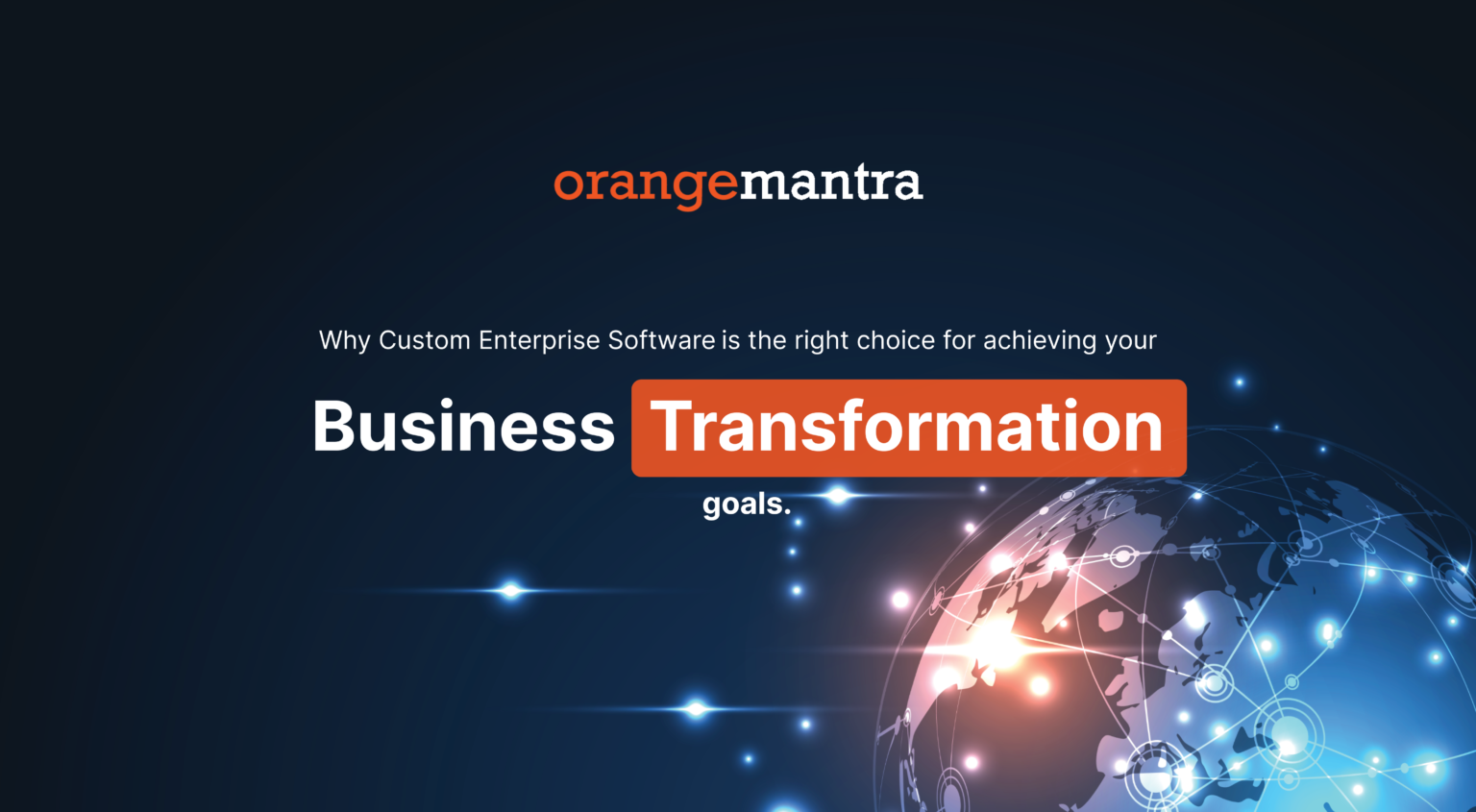
Here’s what you will learn:
Enterprise software development refers to the production of software for small and large businesses. Organizations use these solutions to improve operations and communication with customers.
Enterprise applications differ from consumer software, which you create with organizational or personal use in mind. This guide will explain everything you need to know about enterprise software development and what it takes to create such software products on your own!
Table of Contents
What Is Enterprise Software Development?
The process for building enterprise software often involves larger projects with many people working together to create and maintain it.
Due to this complexity, enterprise software often includes features like computer-aided programming tools (CATs) and integrated development environments (IDEs). Additionally, enterprise software can be costly due to its complexity.
Enterprise Software Development Models
There are different ways of developing enterprise software including the waterfall model, prototyping methodologies, and agile methods like Scrum or Extreme Programming (XP), among others.
The waterfall model is where each stage is completed before moving on to the next. Prototyping methodologies involve creating prototypes of software before completing all stages of development.
Agile methods, like Scrum and XP, involve breaking down large tasks into small ones which are then completed at regular intervals (called iterations). For example, instead of taking one month to complete a project, you might take four weeks to complete the first iteration followed by another four weeks for the second iteration, and so on.
These methods allow for more flexibility when problems arise during development. A common concern with these types of methods is that they may not produce good-quality results because they do not allow enough time for testing every aspect of the project.
However, if done well they have been shown to produce better quality results than waterfall models.
Read Also – Software Development Guide
Why Should Businesses Create an Enterprise Software Solution?
Enterprise software development has a lot of benefits, but the most important benefit is that it provides a platform for your business to grow. This is because enterprise software development gives you access to the latest technology and tools that will be able to help you keep up with all the changes in your industry.
This can also help you reach new markets and customers by giving you the opportunity to customize your product and make it fit your needs. The benefits of enterprise software development are the following.
Moreover, explore a software development guide to begin your project.
1. Business Growth & Revenue Generation:
The biggest benefit of enterprise software development is that it provides a platform for your business to grow.
2. Become a market leader:
The latest technologies and tools available through enterprise software development give you the ability to stay on top of changes in your industry. It is allowing you to reach new markets and customers by customizing your product or service.
3. Streamlined operations:
Another big advantage of enterprise software development is streamlining your operational processes. With this type of system, every piece of information related to your process flows through the system, which makes it easier to maintain records and monitor what’s happening in different departments.
4. Operation Cost Reduction:
A major disadvantage of enterprise software development is that it can often increase operational costs. However, these costs will typically decrease over time as more people in your company learn how to use the system, and efficiency increases over time.
Most of the cost associated with enterprise software development comes from the initial installation and implementation phase.
5. Department Collaboration:
One of the great advantages of enterprise software development is the ability to collaborate across departments. For example, if an employee mentions an idea in a chat room within the system, they might get feedback from employees outside their department before even mentioning it at their meeting.
6. Accuracy Forecasting:
If your team needs accurate forecasting, enterprise software development may not be the right solution for you. Whereas other types of applications allow users to enter estimates based on past data, enterprise systems require estimates based on current data only.
If this doesn’t work for your team or if there isn’t sufficient historic data available, then consider another type of solution instead.
How Custom Enterprise Software Boost Your Business Growth
Enterprise software development not only has a clear goal but also follows certain specific guidelines. Organizations that have experience in this field do their best to control the resources (or actions) they use so that there is less room for error.
Whenever something goes wrong, its effects are usually much greater than anything else. As such, you can read more about these special aspects below.
Performance
Of course, the performance of an app or enterprise software must be paramount. This type of software needs to work very well because it will play vital parts in processes within an organization, and often deal with economic processes.
Precision and quality cannot delay them. Furthermore, this kind of software is usually quite demanding; it’s used by many people simultaneously and across different devices.
It only serves to make it more difficult for developers to maintain top-notch performance standards. That’s why testing and quality assurance in enterprise software development are much stricter than usual.
Scalability
Scalability is a defining characteristic of any software product. Without scalability, a product will quickly disappear from the market within just a short amount of time. Scalability helps determine the progression and improvement of the software- all areas of its functionality, features, etc.
However, it also ensures that performance doesn’t decrease as a result.
Quick ROI
As we said earlier, management of expenses in the creation of business software is rigorous – and this includes an expectation of ROI and how quickly it can happen.
This factor is a priority; it can be measured using metrics such as productivity, efficiency, and how much impact this has on the overall budget. In the development of software for businesses, Return on Investment cannot happen over a long period. It needs to happen within a short or medium time frame.
Steps Involved in Enterprise Software Development
1. Identify the core business requirements and define what your enterprise software development needs are.
2. Assess whether you can build the necessary expertise internally, or if you need to hire a nearshore app development company with incredible expertise.
3. Determine the timeline for the project and do an initial cost estimate.
4. Create a basic design for your new system.
5. Determine how much it will cost and when it will be developed and deployed.
6. Develop and test a prototype of your new system.
7. Develop a full system in an agile model, while ensuring meeting product development deadlines.
8. Launch your new enterprise software product once it’s ready.
9. Finally, make sure that every phase of your enterprise software development project goes smoothly by following these steps.
Challenges in Multi-layered Enterprise Software Development Processes
Enterprise software development has its own set of challenges. These include developing a system that can be used by thousands of people across different departments, stakeholders, and levels of expertise.
It’s also difficult to build a system that will be effective for both the short-term needs as well as the long-term vision of the company. And then there is always the challenge of managing change over time and making sure that your enterprise software becomes more efficient and more user-friendly with every iteration.
The biggest key to success in enterprise software development is working closely with all stakeholders at the very beginning stages of project planning. Communication and input from everyone who might use the system are necessary. So that, it can meet their future needs without any additional investment on their part.
Without this input, it’s easy to end up building something nobody wants or using resources inefficiently.
How to Overcome these Challenges?
There are many challenges that can come up when developing enterprise software. One way to overcome these challenges is by having a clear vision and a shared understanding of what success will look like.
Another key strategy is to have an organized team with enough resources and support to get the job done. Enterprise teams usually need to use more sophisticated methods, such as agile development, rapid prototyping, and iterative design.
The best thing you can do for your company is to set clear expectations from the beginning about what your project needs for it to be successful.
Top Examples of Enterprise Software
1. An excellent example of business software is the workflow tools that are so good that some companies consider them an inherent need. You’ll find many examples of this type of solution, including WorkflowGen, Trello, and Slack tools that weren’t designed specifically for your company but nonetheless serve as huge assets.
If you require to automate tasks such as assignments or management/control, having a team develop a tool like these will likely be the best thing to happen to you.
2. Yet another example is CRM or Customer Relationship Management (CRM) Software. What you’re looking for with this type of business software is essentially a database of all customers and potential clients, along with places where they can be contacted.
In-person, by phone, through social media sites – even if it’s just noting who was reached out to recently or how often you’ve been in contact before. Typically, says Sisense, the best CRMs include features like workflow automation and dedicated document libraries.
And role-based user access, multi-currency support, email integration, and tracking tools.
Wrapping Up
Enterprise software is an excellent choice if you want to transform wide-ranging business areas. The ITES market offers a dizzying variety of options, ranging from development from scratch to framework-based solutions. You can customize your software exclusively for your company’s unique needs.
These types of projects require precise controls and unique features that set them apart from regular software development. They are products planned over a long period, so they continue to work well over time.
It is advisable to bet on a contractor or Tech Co-founder to design this type of software since it brings knowledge, experience, and innovation—the key components for success in today’s digital world.
FAQs
Q.1. Why should I go for custom enterprise software instead of a ready-to-use one?
Custom enterprise software development meets the unique requirements of enterprises that off-the-shelf applications cannot fulfill. Personalized enterprise applications boost efficiency by reducing manual interference, streamlined and automated workflows, and enhancing productivity, among other benefits. Besides, the right enterprise solutions also cut down the overall cost of ownership by offering unlimited customization options.
Q.2. What is cloud ERP software?
Cloud-based enterprise resource planning solutions a type of run on a cloud computing platform, rather than on a business’s premises. Cloud ERP solutions offer great benefits in terms of cost and efficiency.
Q.3. What is the difference between web applications & enterprise applications?
A web application executes in a web container and comprises servlets alone and named with an extension. Whereas an enterprise application runs in a special container called enterprise container which has special features like JMS, Transaction, etc. Java India offers the industry-best web and enterprise application development services.
Q.4. How much does it cost to build a Java-based enterprise application?
The costs of developing a Java enterprise application depend on several factors. Design complexity, development time, type of features, etc. play an important role in calculating the costs. Java India delivers impeccable Java enterprise applications at a competitive price.
Q.5. What are the key considerations for enterprise software development?
An array of factors needs to be considered for smooth enterprise software development. Some of the key considerations of custom enterprise software development include:
• Client requirement gathering
• Defining goals and integrating them into the workflows
• Selection of a development team with the right skills


